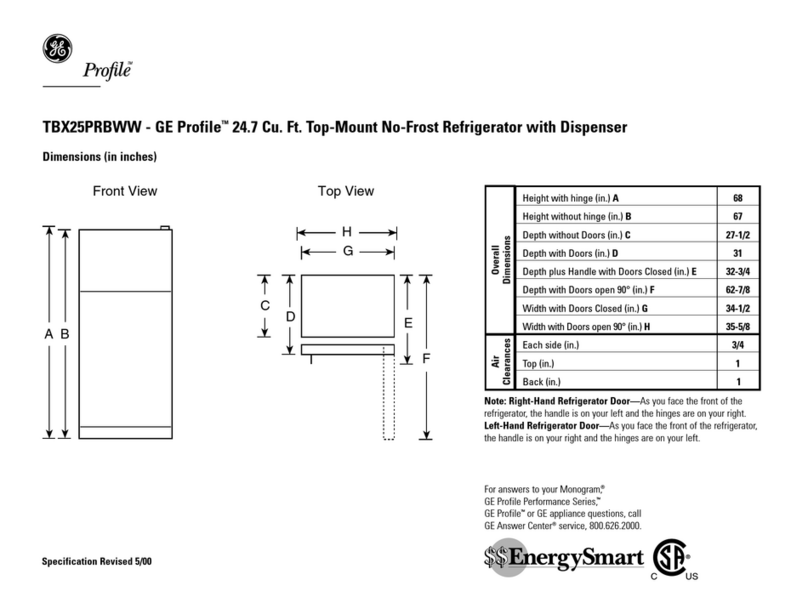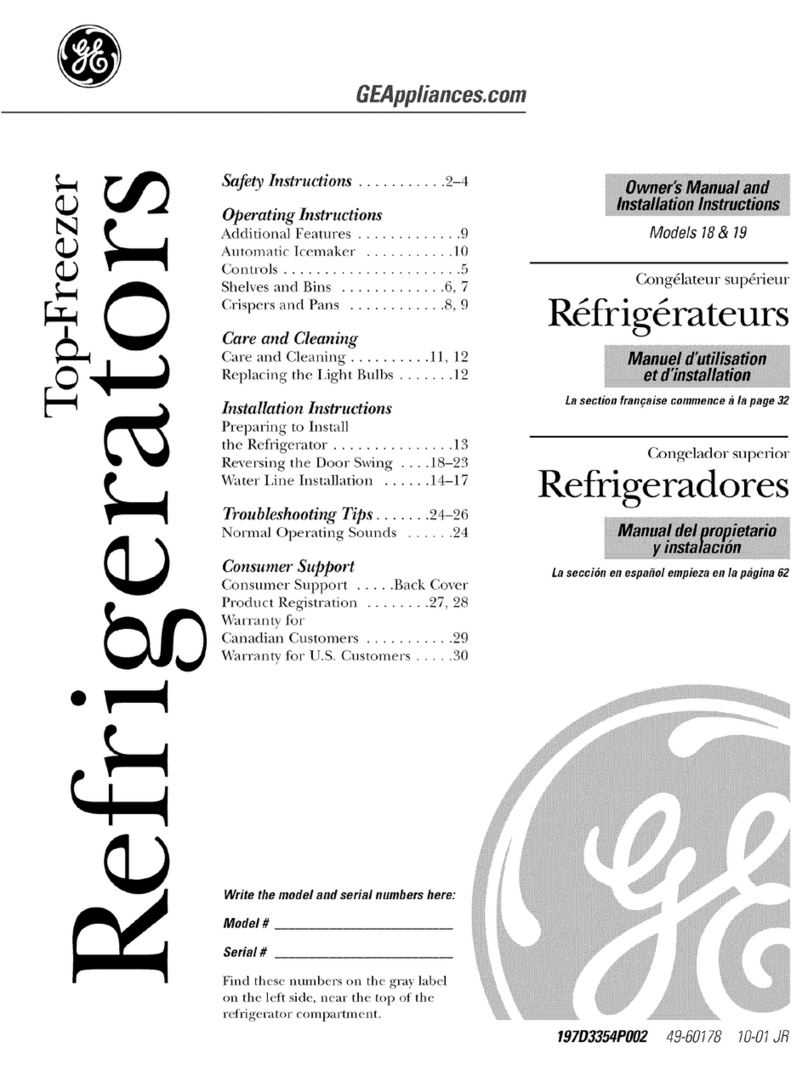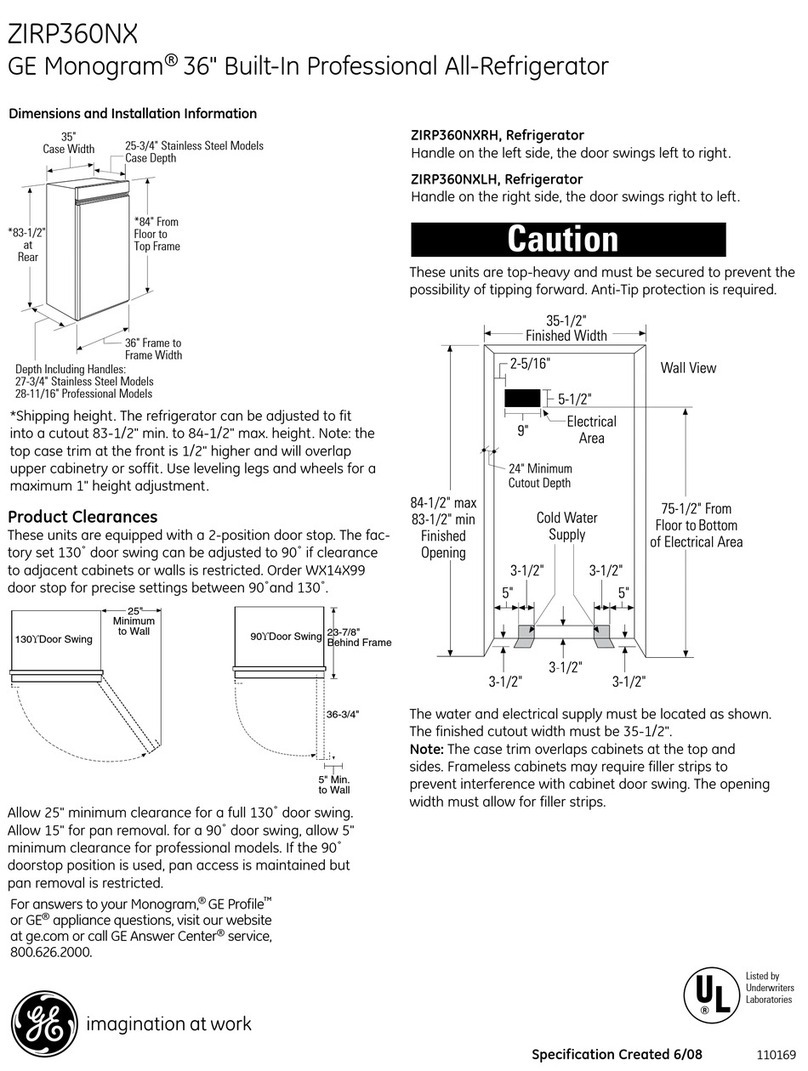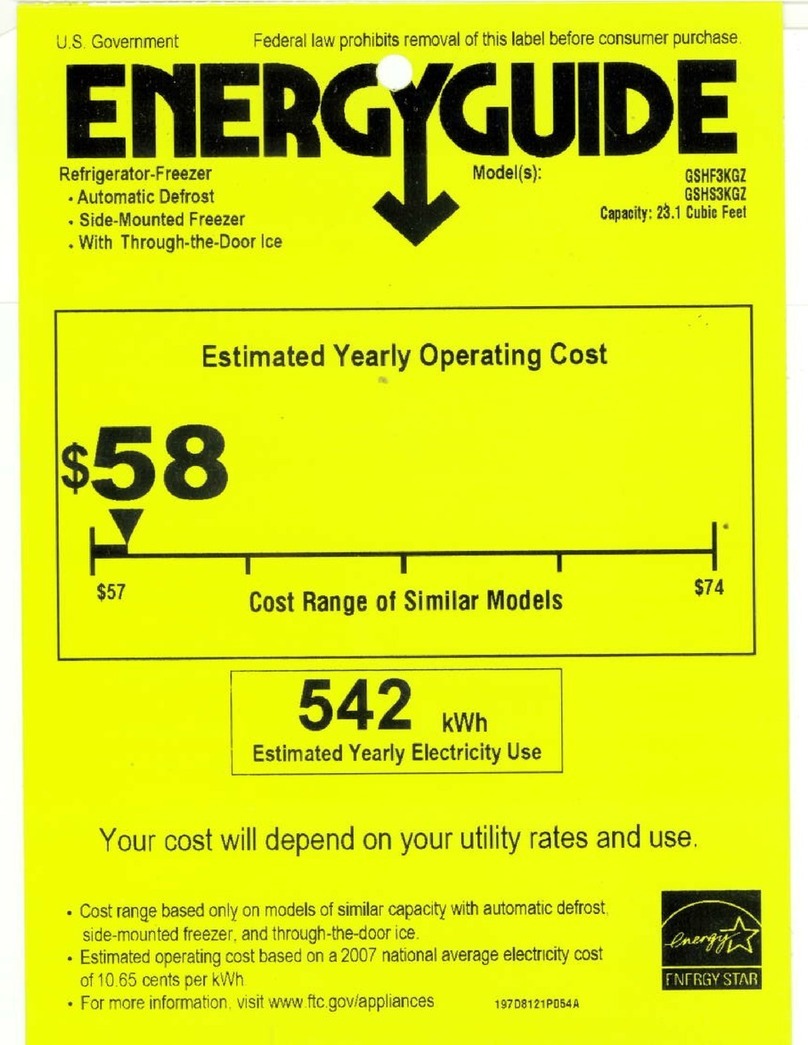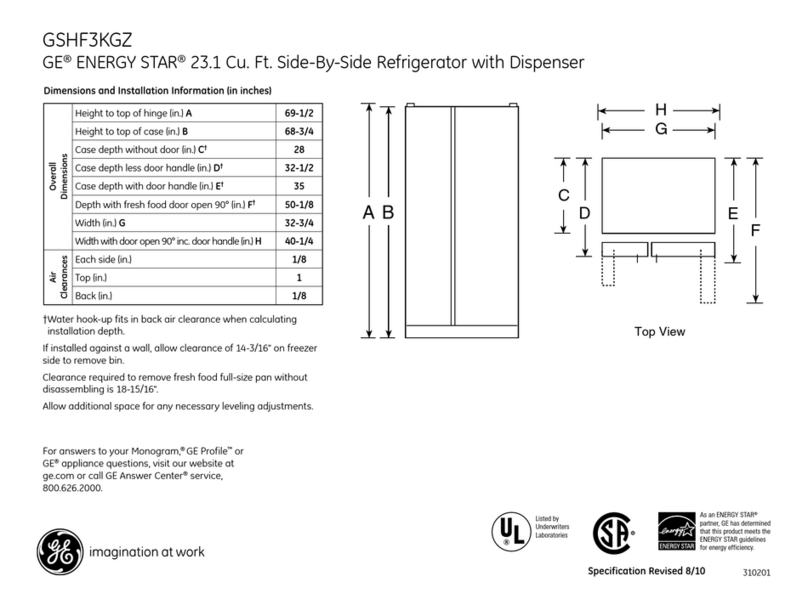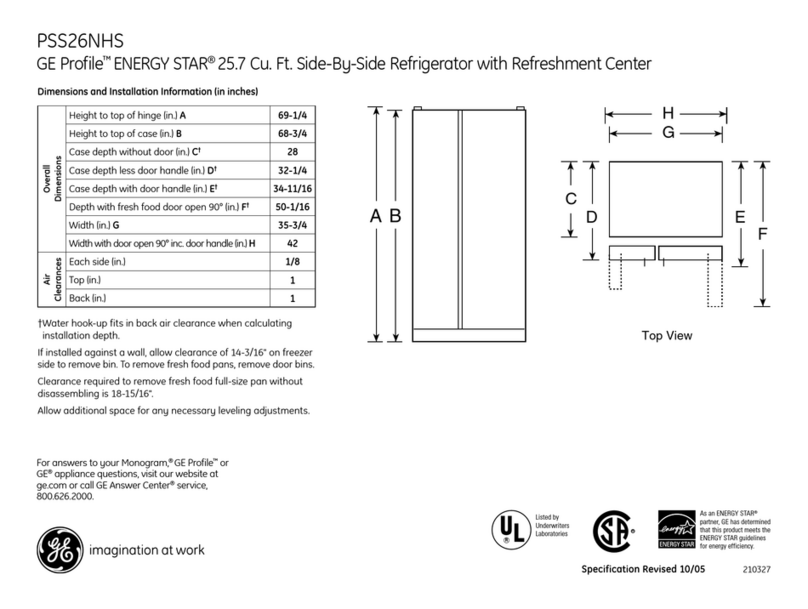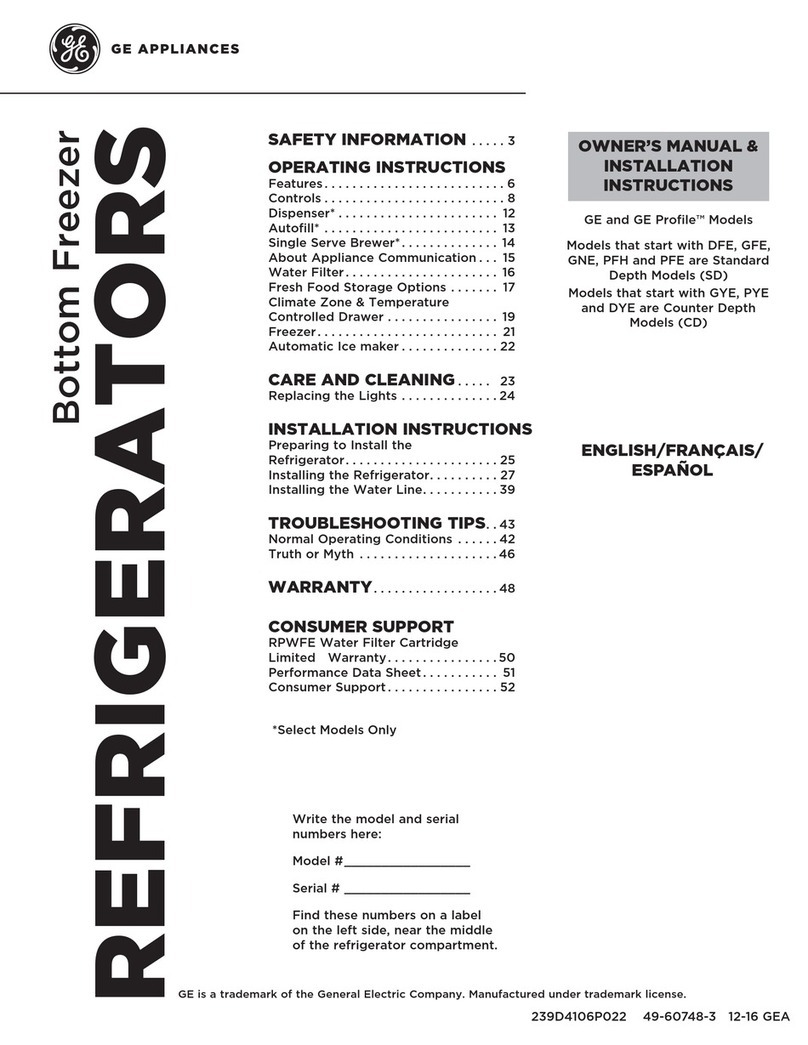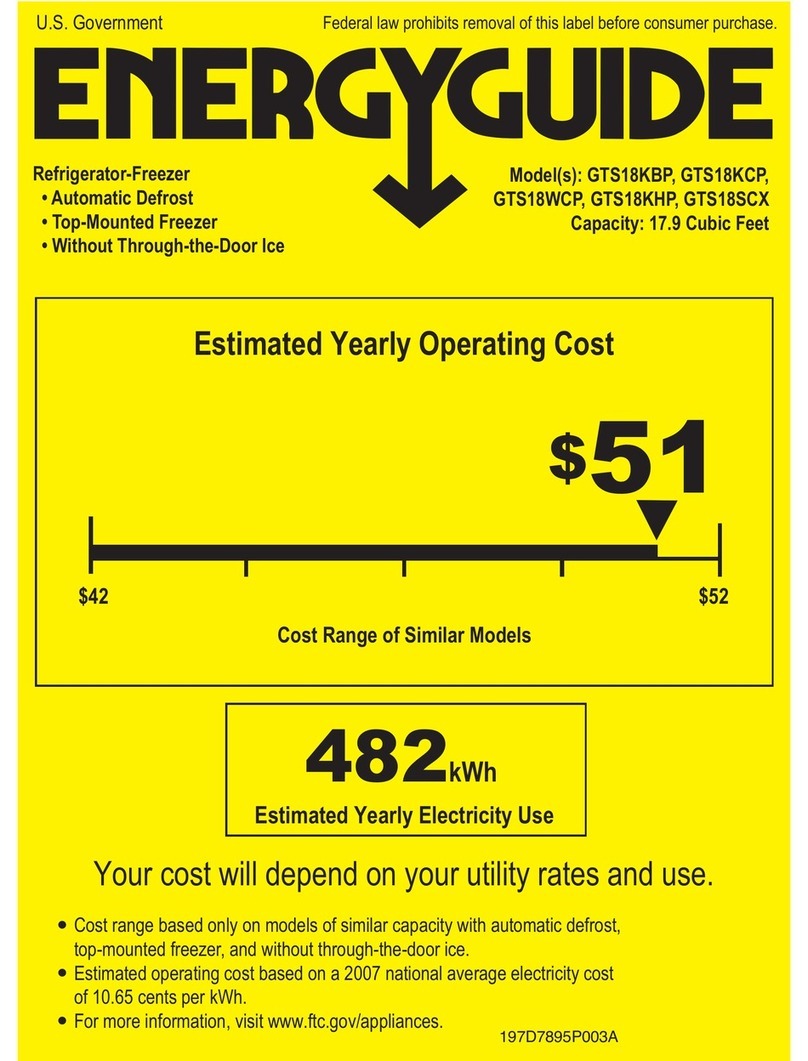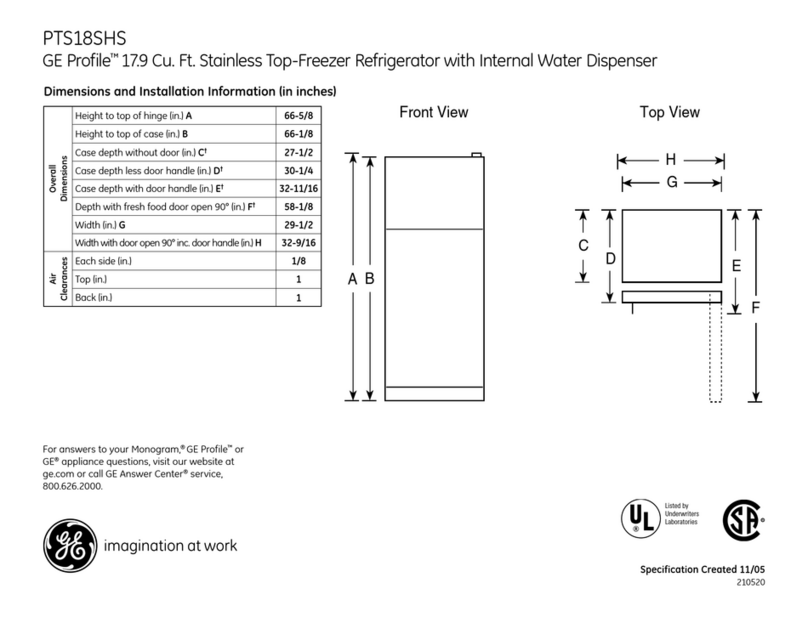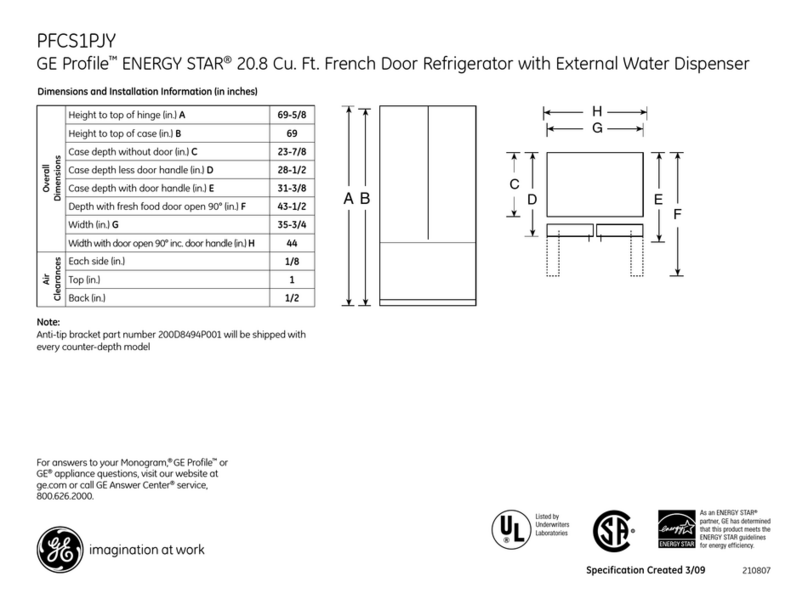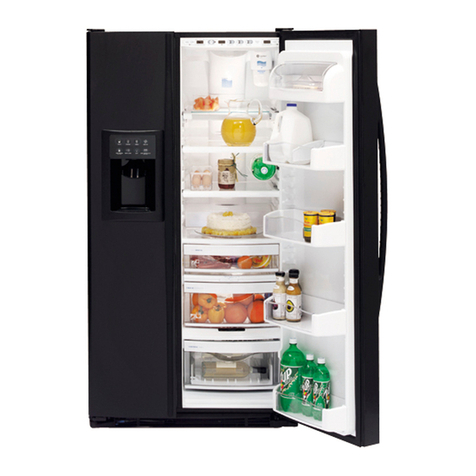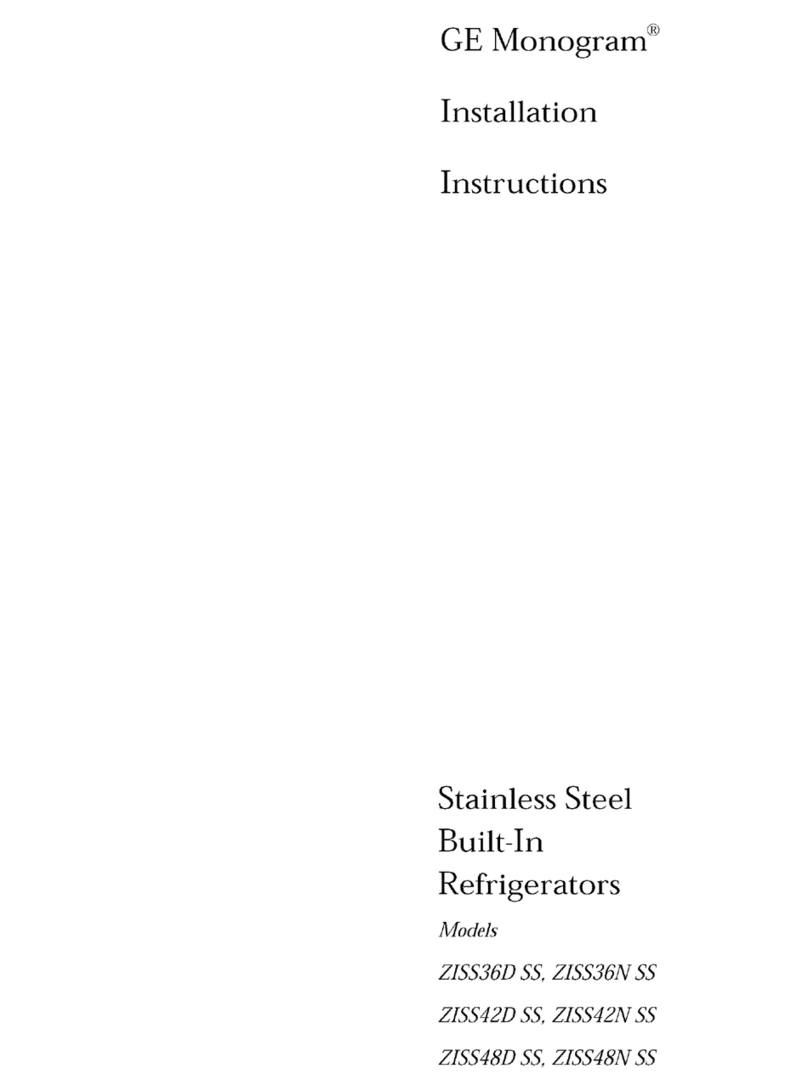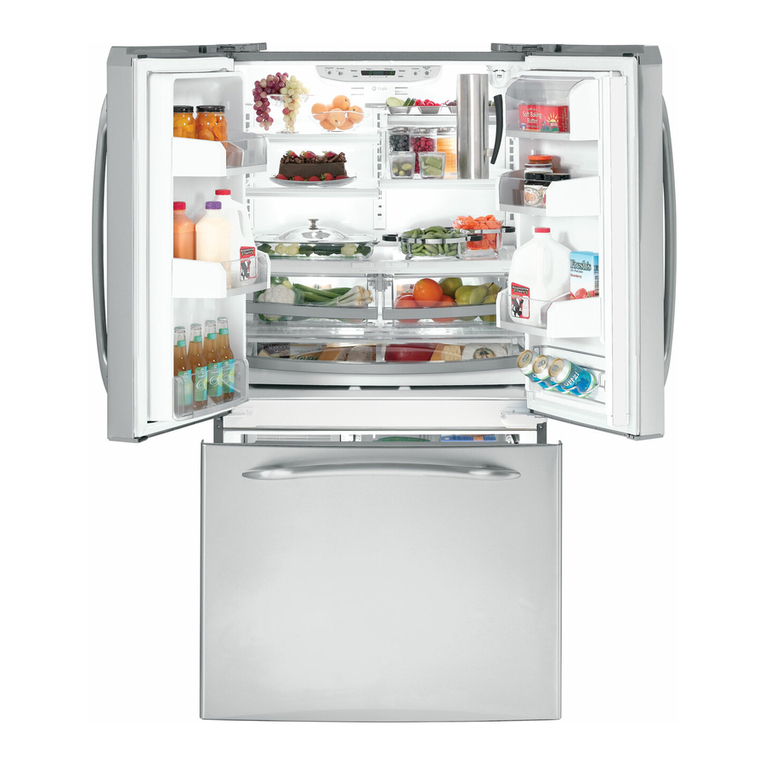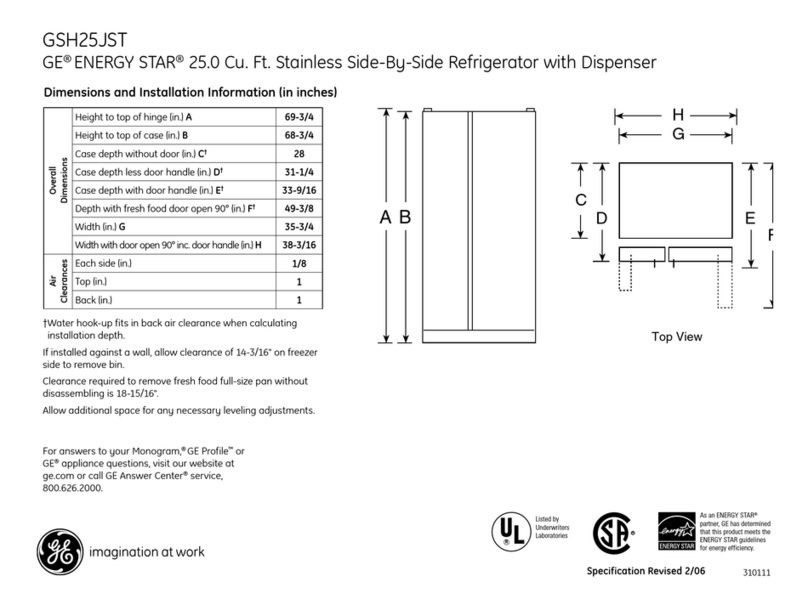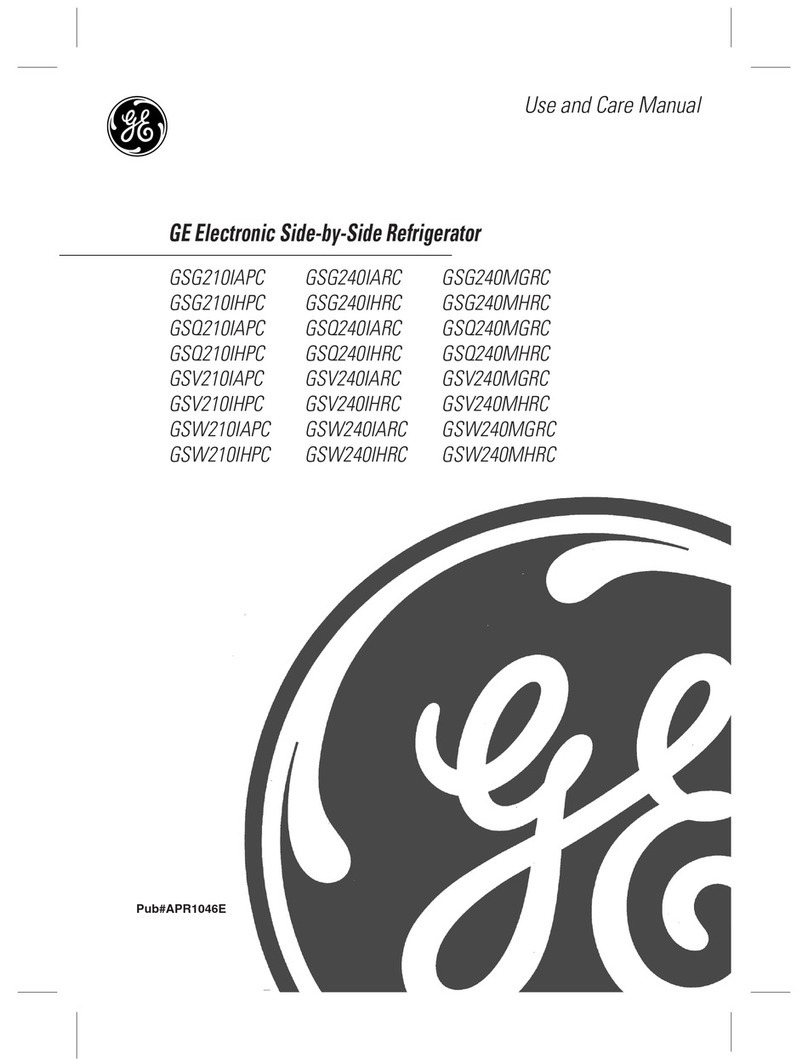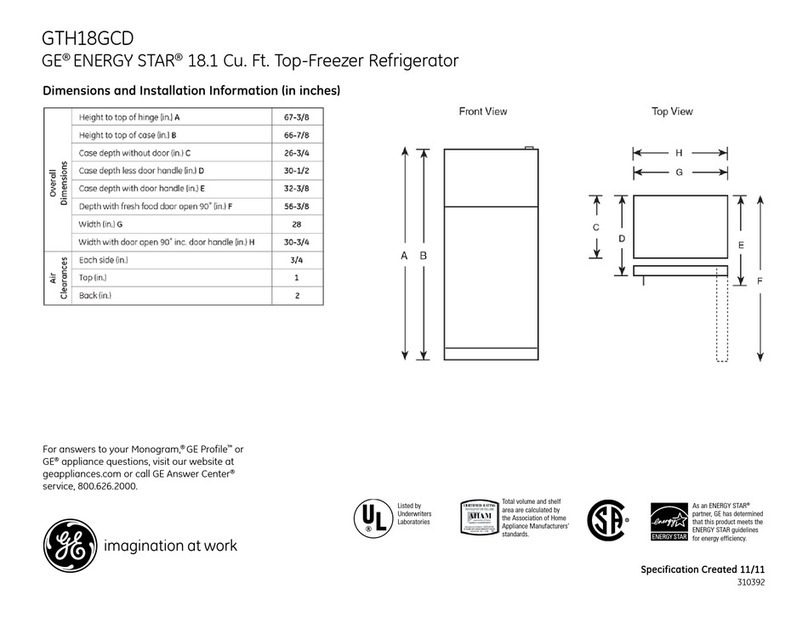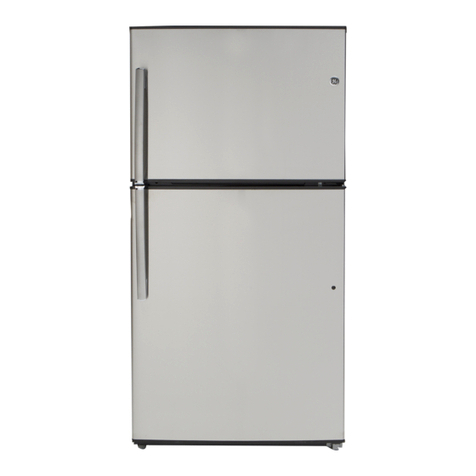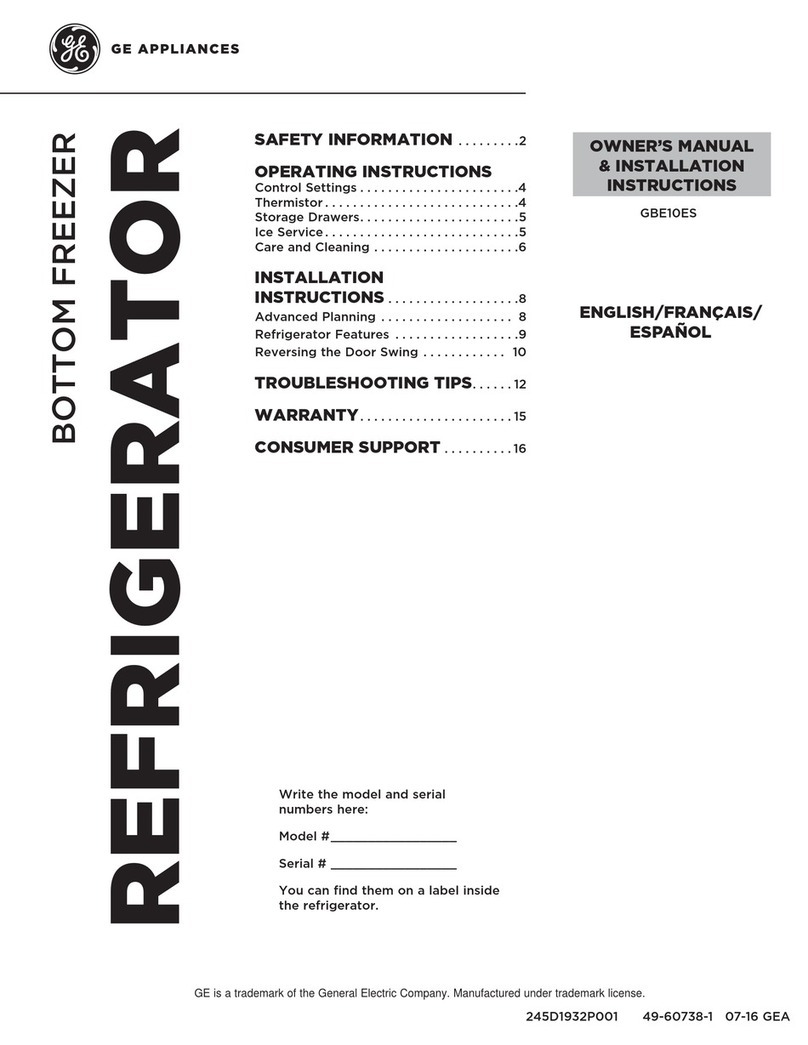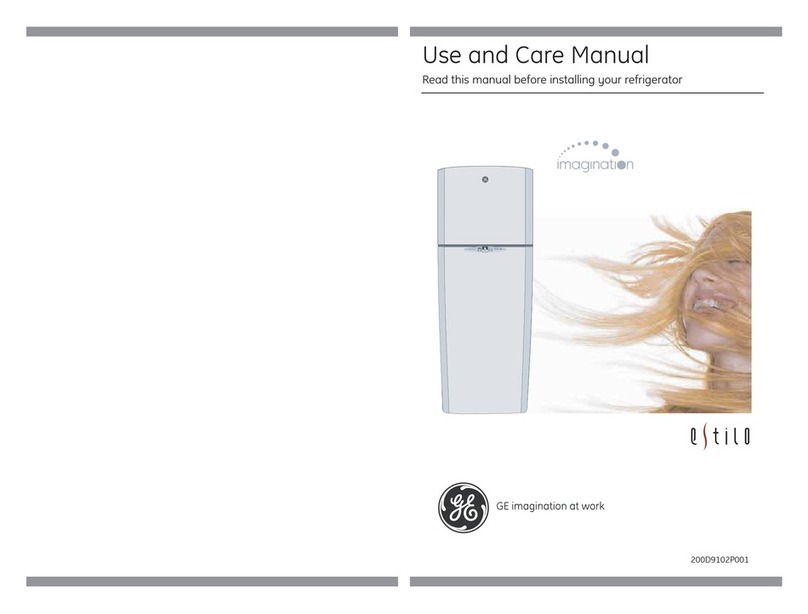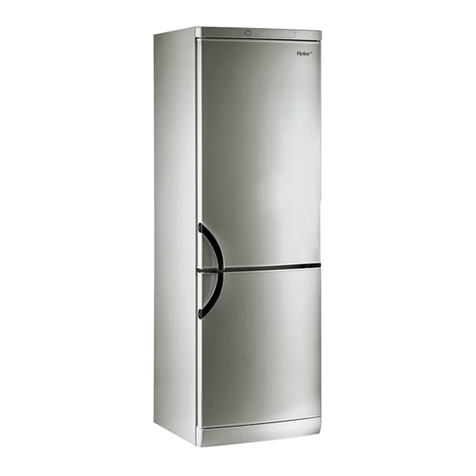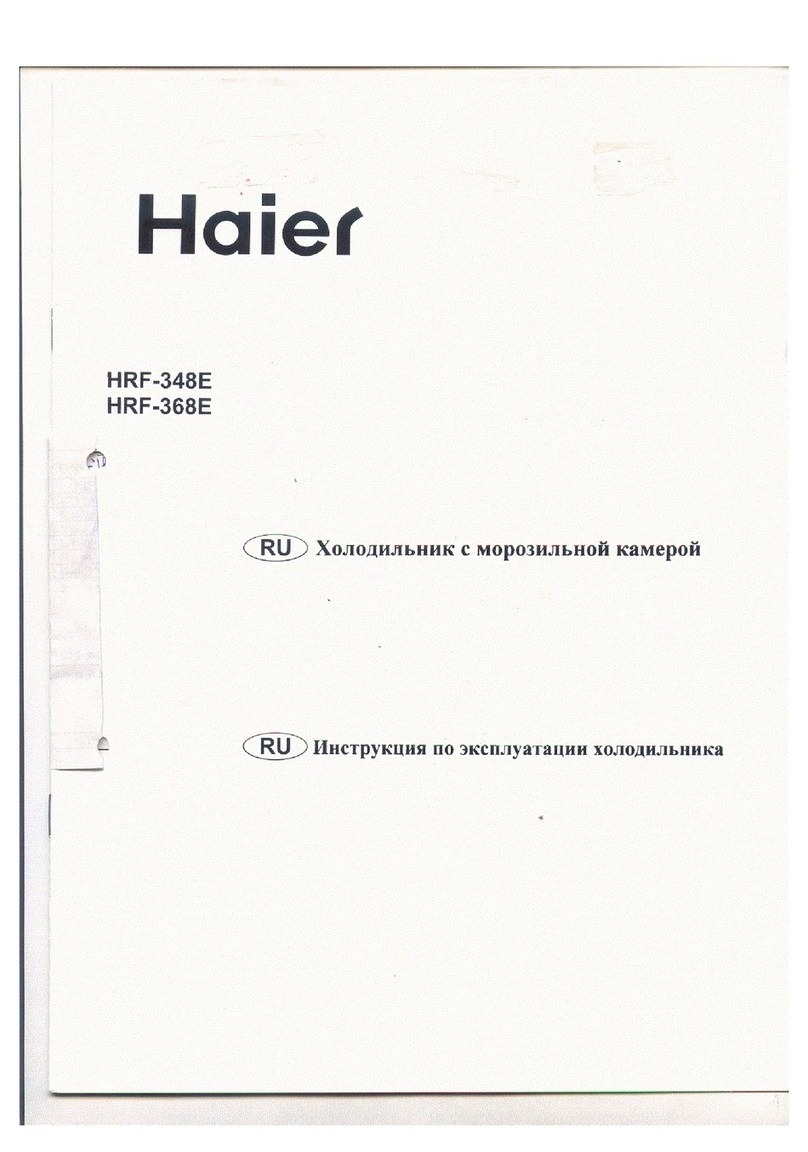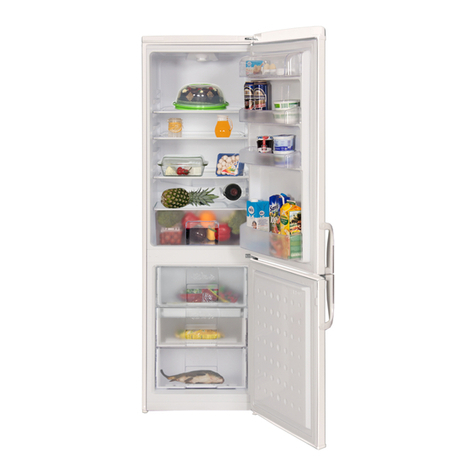Cleaning—Outside
Keep the finish clean. Wipe with
a
clean
cloth, Protect the paint finish. The finish on the outside of
lightly dampened with kitchen appliance wax or mild the refrigerator is a high quality, baked-on paint
liquid
dishwashing
detergent. Dry and polish with
a
finish. With proper care, it will stay new-looking and
clean, soft cloth. Do not wipe the refrigerator with a rust-free for years. Apply a coat of kitchen/appliance
soiled
dishwashing
cloth or wet towel. These may wax when the refrigerator is new, and then at least
leave a residue that can damage the paint. Do not use twice a year.
scouring pads. powdered cleaners, bleach, or cleaners
Appliance Polish Wax & Cleaner (Cat. No.
WRW’X02
16)
containing bleach, because these products can scratch
is available
frotn
GE Appliance Parts Marts.
and weaken the paint finish.
Cleaning—Inside
Clean the inside of the fresh food
and freezer compartments
at
least
once a year.
Unplug
refrigerator
before cleaning.
If
this is not
practical. wring excess moisture out
of sponge or cloth when cleaning
around switches.
lights
or controls.
Use warm water
and
baking soda
solution-about a tablespoon of
baking soda to a quart
of
water. This
both cleans and neutralizes odors.
Rinse thoroughly with water and
wipe ally.
Glass shelf over vegetables drawer
can
be removed and taken to the sink
for washing with soap or mild liquid
detergent and water after it has
warmed up.
Never put glass shelf
into hot water when it is cold.
other parts of the refi-igerator-
including door gaskets, vegetable
drawer, and
all
plastic parts—can
be cleaned the same way. After
cleaning door gaskets, apply a thin
layer
of
petroleum jelly to the door
gaskets at the hinge side. This helps
keep the gaskets from sticking and
bending out of shape. Do not use
cleansing powders or other
abrasive cleaners.
To help prevent odors, leave an open
box of baking soda in the rear of the
refrigerator, on the top shelf. Change
the box every three months. An open
box of baking soda in the freezer will
absorb stale freezer odors.
Do not wash any of your
refrigerator’s plastic parts in
your automatic dishwasher.
Behind refrigerator
Care should be taken in moving
your
refrigerator away from the
wall. All types of
~loor
coverings
can be damaged, particularly
cushioned coverings and those
with embossed surfaces.
Defrost Water Pan
Defrost water pan
Pan located on top
of
compressor at
rear of refrigerator should be cleaned
at least once a year. DO NOT
REMOVE PAN. Move refrigerator
out from wall as far
as
necessary. and
unplug power cord from wall outlet
before cleaning pan. Use a clean
cloth or sponge dampened in warm
water and baking soda solution-one
tablespoon of baking soda to a quart
of water.
Do not use
cleansing
powders, abrasive cleaners, bleach or
cleaners containing chlorides.
Light bulb replacement
Press here
The
light
bulb
and socket are
located in the upper right rear
corner of the fresh food
compartment.
Hook
1
—
I
To replace the light bulb,
unplug
the refrigerator’s power cord plug
from the wall outlet. Press the
tlexible
wire bulb guard until hook
on
gtlard
comes
out
of retaining
hole.
Unscrew burned-out bulb and
replace it with a standard 40-watt
appliance bulb. Then push bulb
guard Up and press in until it hooks
into the retaining hole.
7
—
